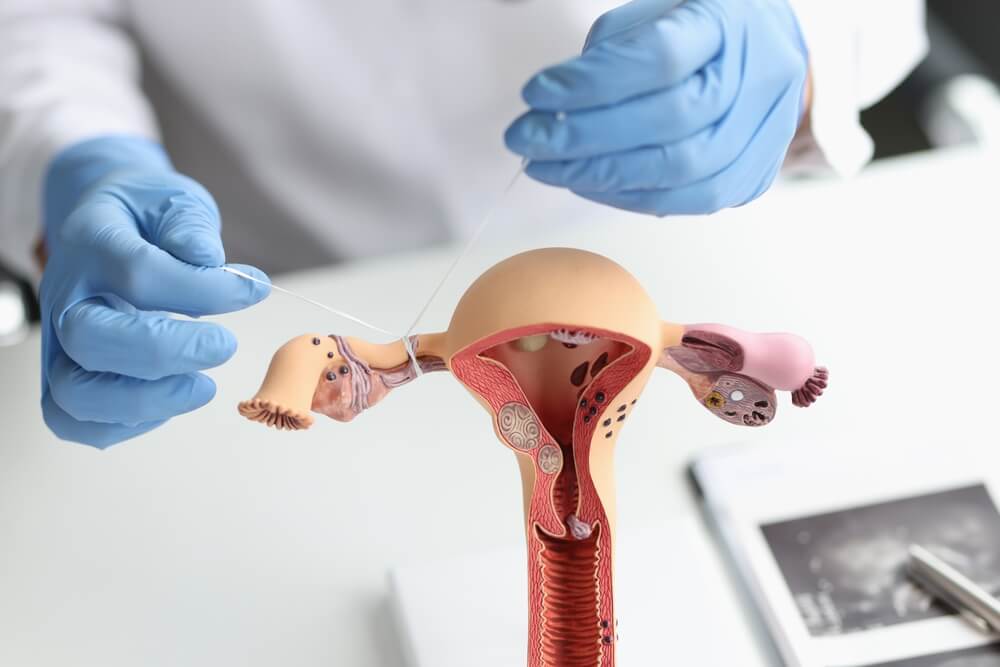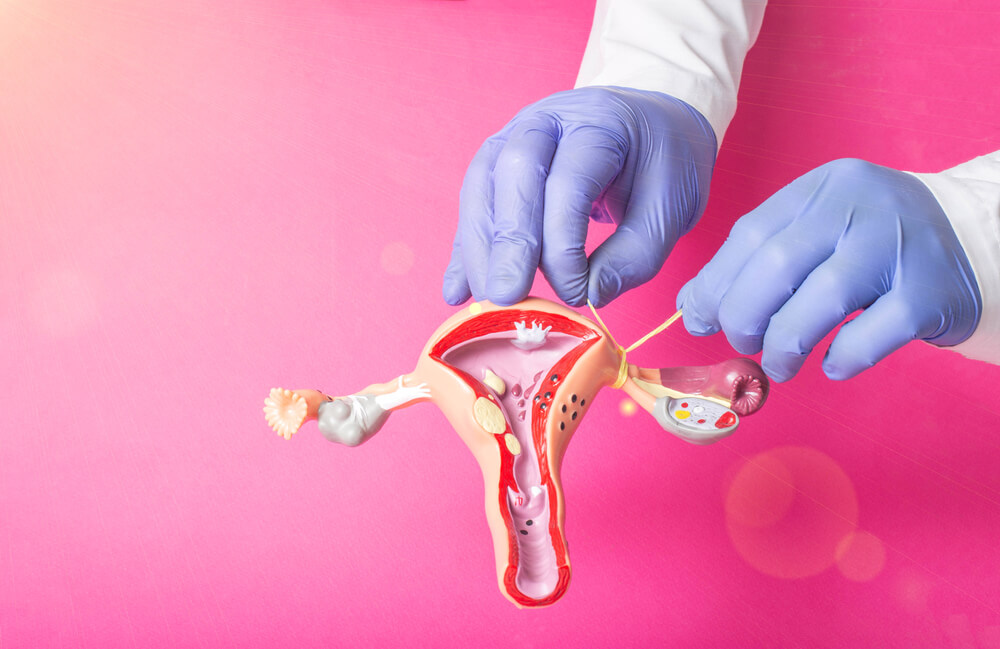Having your tubes tied, also referred to as tubal ligation, is a surgical procedure that makes it impossible to conceive afterward. Essentially, the tubal part of the term means the fallopian tubes, while the ligation literally means to tie off. The fallopian tubes connect the uterus with the ovaries, meaning that an unfertilized egg has to go through them. After having the tubes tied surgery, the fallopian tubes get blocked off so that eggs can’t pass through and get fertilized. In case you’re considering this type of procedure, getting familiar with all its pros and cons is essential. You can always contact us at Advanced OBGYN Institute if you have any questions.
The Benefits of Tubal Ligation
Having your tubes tied is a permanent contraceptive solution. If you already have children and don’t plan on having any more, or simply don’t wish to have kids at all, this is a huge advantage. Most importantly, the tubes tied surgery works; namely, after having their tubes tied, only approximately one in 200 women could eventually become pregnant, which is lower than one percent.
There are no hormonal fluctuations due to this procedure. Neither your menstrual cycle nor menopause will be affected. Furthermore, tubal ligation does not result in mood changes, headaches, or weight gain that are commonly associated with birth control pills or the cramping, spotting, or heavier flows that can occur with IUDs.
There’s nothing you’ll have to keep in mind. To avoid becoming pregnant, you don’t need to insert a diaphragm, use condoms, take a pill, or keep track of the fertile days. Therefore, you’re likely to feel less anxious about having sex.
The risk of developing ovarian cancer could be reduced. Although the actual reason why has yet to be identified, studies have revealed that tubal ligation significantly reduces a woman’s risk of developing this particular form of cancer.
You might benefit from tubal ligation if having a child would put your health at risk or if a genetic disease could be passed on to the baby.
The Disadvantages of Tubal Ligation

Reversal surgery may be able to undo the effects of tubes tied surgery, although this is not always the case. Only approximately 50% of women who go through reversal are successful in conceiving afterward. Tubal ligation isn’t a good idea unless you know for sure you never want to have children.
Getting your tubes tied is not a preventative measure against sexually transmitted diseases. To avoid contracting STDs like HIV, you should always use a condom.
Even though it’s very rare, this procedure can sometimes fail. Pregnancy is possible if your tubes have not fully closed.
There’s a potential ectopic pregnancy risk. This form of pregnancy develops outside of the uterus, most often in the fallopian tubes. An ectopic pregnancy increases the risk of a ruptured tube. Extreme bleeding may result from this. This condition requires immediate surgical intervention.
Some surgery-associated risks do exist. Bleeding or injury to your colon, blood vessels, or bladder are the most common complications of this surgery, although relatively rare.
The hormones estrogen and progesterone may drop suddenly after tubal ligation. Post-tubal ligation syndrome (PTLS) is a term used to describe this potentially troublesome outcome, though it is often disputed. Similar to menopause, you may experience night sweats, hot flashes, vaginal dryness, mood fluctuations, insomnia, decreased libido, and irregular periods.
Alternatively, you may suffer from painful and heavy flows.
You can get an infection at the incision site or have an adverse reaction to the anesthetic. A tiny percentage of people may also have persistent abdominal pain.
If you are overweight, suffer from conditions like pelvic inflammatory disease, diabetes, or lung illness, or have had previous surgery in the same location, you are at a greater risk of the mentioned complications.
In case a surgeon uses electricity to close your fallopian tubes, you run the risk of getting burns on your intestines or skin.
What to Expect from the Procedure?
Your tubal ligation procedure will occur in an inpatient or outpatient surgery facility. You won’t feel a thing during surgery since the doctor will put you to sleep. For instance, Advanced OBGYN Institute performs tubal ligation as part of in-hospital procedures in Weston and Pembroke Pines.
During this procedure, the surgeon will create a few tiny incisions in your stomach and fill it with gas. To examine your abdominal cavity, a laparoscope (a thin and long device akin to a telescope) will be inserted through a single incision. They’ll insert instruments into one end to close your fallopian tubes permanently.
Next, your surgeon will close the incisions in your stomach with stitches. After waiting a few hours, you can go home and relax.
The Tubal Ligation Recovery Process

In general, the tubal ligation recovery process tends to proceed smoothly. As mentioned, chances are you’ll be able to go home on the very same day of the procedure.
Some soreness or discomfort at the incision sites is to be expected after surgery. Sore throat, dizziness, nausea, lethargy, moderate vaginal bleeding, and headaches are possible side effects of the anesthetic.
It’s possible to experience abdominal swelling after a tubal ligation if the surgeon inflated the abdomen with gas. You can also feel discomfort in your stomach or shoulders. This should clear up on its own in a few days.
Bathing or showering should be avoided for 48 hours following the procedure. In order to ensure problem-free tubal ligation recovery, incisions should be left alone for at least a week before being rubbed or scrubbed. After a soak in the tub or a quick shower, pat yourself dry gently.
Once the swelling and pain from the tubal ligation procedure have subsided, you can resume your regular activities. It’s safe to engage in sexual activity about a week post-surgery. You shouldn’t attempt any heavy lifting until your doctor gives the all-clear.
The Matter of Tubal Ligation Cost
Several factors, including your location, the quality of your healthcare provider, and your health insurance plan, can affect the tubal ligation cost and how much money you’ll have to pay out of pocket for this procedure. Typically, tubal ligation cost falls between 1,500 and 6,000 dollars.
Tubal ligation is one of the most effective contraceptive methods available, but it’s recommended for women who are sure that they don’t want to have kids in the future. While the reversal surgery is possible, it’s fairly complex and doesn’t guarantee success. This is why it’s so important to weigh the pros and cons of this particular procedure. If you’re thinking about it, may be interested in learning about other contraceptive options, or simply wish to make an appointment to maintain your gynecological health, don’t hesitate to reach out to us at Advanced OBGYN Institute. You can be absolutely certain that our friendly and experienced staff, backed by state-of-the-art technology, will take very good care of you.






